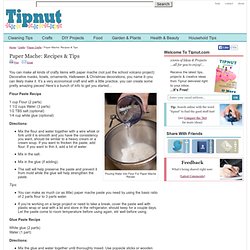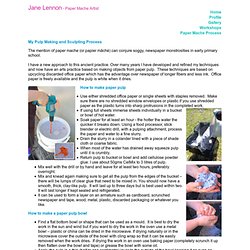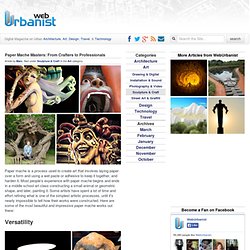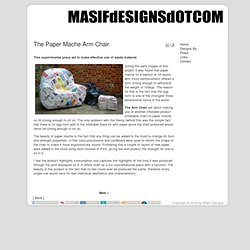

Paper Mache: Recipes & Tips. You can make all kinds of crafty items with paper mache (not just the school volcano project): Decorative masks, bowls, ornaments, Halloween & Christmas decorations, you name it–you can likely make it.

It’s a very economical craft and with a little practice, you can create some pretty amazing pieces! Here’s a bunch of info to get you started… Pouring Water Into Flour For Paper Mache Recipe Flour Paste Recipe 1 cup Flour (2 parts) 1 1/2 cups Water (3 parts) 1/2 TBS salt (optional) 1/4 cup white glue (optional) Directions: Mix the flour and water together with a wire whisk or fork until it is smooth and you have the consistency you want, should be similar to a heavy cream or a cream soup.
Tips: You can make as much (or as little) paper mache paste you need by using the basic ratio of 2 parts flour to 3 parts water.If you’re working on a large project or need to take a break, cover the paste well with plastic wrap or seal with a lid and store in the refrigerator, should keep for a couple days. Paper Mache Albino Dragon.
Paper Mache Clay. Several years ago I developed a new recipe for a sculptural material I call “paper mache clay.”

This material is so easy to use and so easy to make that I now use it exclusively for all my paper mache sculptures. The recipe has now gone “viral” and is being used by artists all over the world. It might be a bit more accurate to call this material “home-made air-dried cellulose-reinforced polymer clay,” but that’s way too hard to say (or type!) , so for now, let’s just call it paper mache clay. The first video below shows how to make the paper mache clay, and the second video answers some common questions that I’ve received from readers since I first developed this recipe. I usually make mine fairly thin so it can be spread over an armature like frosting, by using less flour than the recipe calls for – but you can also make it thicker, with more flour, when you want more control over the modeling process.
Jane Lennon - Pulp Making and Sculpting Process. Jane Lennon - Paper Mache Artist My Pulp Making and Sculpting Process The mention of paper mache (or papier mâché) can conjure soggy, newspaper monstrosities in early primary school.

I have a new approach to this ancient practice. Over many years I have developed and refined my techniques and now have an arts practice based on making objects from paper pulp. These techniques are based on upcycling discarded office paper which has the advantage over newspaper of longer fibers and less ink. Paper University - Art Class. Papier Mâché The term papier mâché (pronounced póp-ee-ay mash-áy) comes from the French phrase meaning "chewed paper.

" You can use papier mâché to make piñatas, masks, jewelry, and lots of other crafts. Paper Mache Masters: From Crafters to Professionals. Paper Mache Masters: From Crafters to Professionals Article by Marc, filed under Sculpture & Craft in the Art category.

Paper mache is a process used to create art that involves laying paper over a form and using a wet paste or adhesive to keep it together, and harden it. Most people’s experience with paper mache begins and ends in a middle school art class constructing a small animal or geometric shape, and later, painting it. Some artists have spent a lot of time and effort refining what is one of the simplest artistic processes, until it’s nearly impossible to tell how their works were constructed. Here are some of the most beautiful and impressive paper mache works out there: Versatility (Images via dpnsan, tvhousewatch, fremont universe) Paper mache is used for everything from art exhibit installations, to ridiculous homemade bobbleheads, and even impressive life size sculptures like the one pictured. Giant Creations (Images via kimgraham, eddyboston, centro culturale) Art Pieces.
Papier Mache.
Paper Mache - Creative Paper Mache Sculpture Artist Thailand. How to Make a Paper Mache Chair. How to Make and Build Paper Furniture. Masif Designs - The Paper Mache Arm Chair. The Arm Chair set about making use of another inflatable product (inflatable chair) to paper mache on till strong enough to sit on.

The only problem with the theory behind this was the simple fact that there is no egg form with in the inflatable there for with paper alone the shell produced would never be strong enough to sit on. The beauty of paper mache is the fact that any thing can be added to the mold to change its form and strength properties. In this case polystyrene and cardboard were used to reform the shape of the chair to make it more ergonomically sound. Furthering this a couple of layers of new paper were added to the mold using resin instead of PVA, giving the end product the strength for one to sit in it. I feel the product highlights consumption and captures the highlights of the time it was produced through the print displayed on it.
Flexible and now possible that they already been find out more find out more a bank statement or medical emergency.